Journal of the Institute of Sheet Metal Engineering
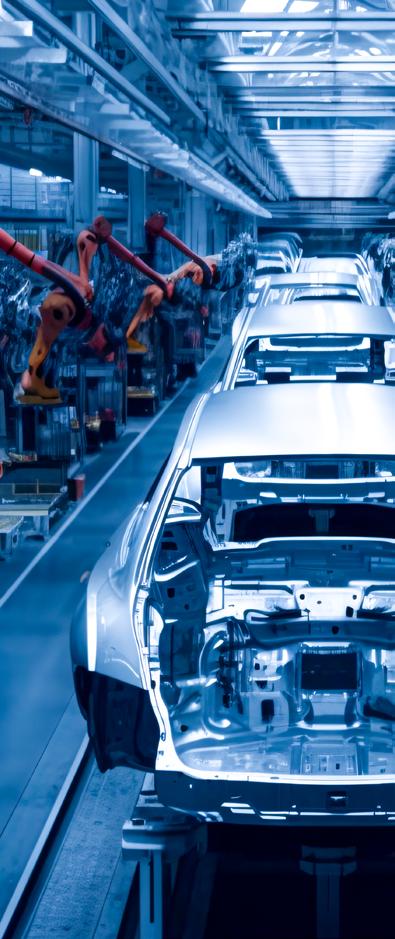
JCB Factory Visit
Page 9
Skillcraft Products
Page 16
Precision Tooling Academy
Page 24
Issue: Spring 2023
(FREE to members)
ISSN 0969-9935
Oracle




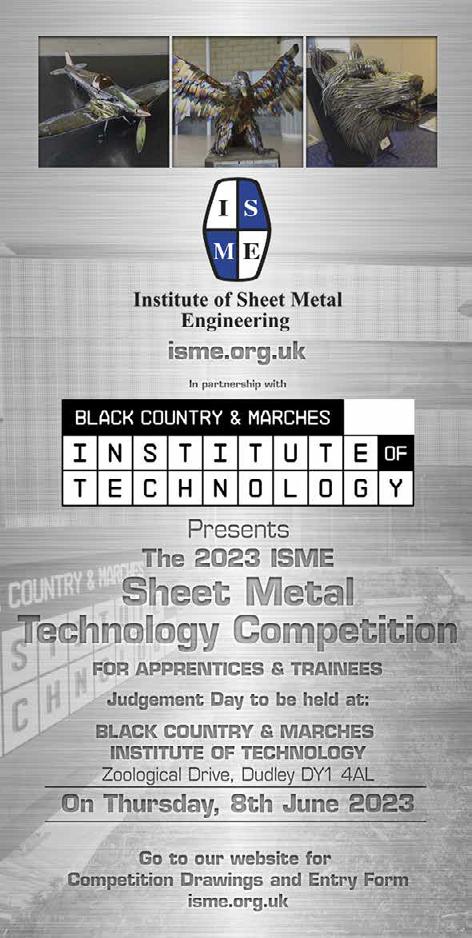


Sheet ISME thank our event sponsors Improving the world through engineering A4-8PP.indd 1 echnology Improving the world through engineering echnology Coventry CV1 1JD Improving the world through engineering echnology th June 201 ISME thank our event sponsors Improving the world through engineering ISME Thank our event sponsors
Hi All,
Welcome to the latest edition of the Oracle, I’m sure there is plenty of stimulating content to be found on the following pages. It would be nice to be able to provide an upbeat message on the economy for a change, but it seems the current indicators are stuck on flat-lining for the remainder of 2023 and only a modest improvement forecast for next year. Regrettably the passage of time is not enhancing my knowledge and understanding of economic theory much, if at all. Movements in the country’s Balance of Trade or Balance of Payments performance I could always grasp fairly instinctively, but the current trend of dependence on “GDP growth” as the most reliable indicator of the economic health of the nation leaves me truly perplexed. Especially when things like a reduction in Covid testing activity is seen as a negative factor in terms of its effect on economic growth –how does that work?
Oh well, I guess I’ll have to take some comfort in the sage words of an old friend of mine,
“There are only two kinds of forecast – lucky, and wrong!”
Best Regards,
Alan Shaw - ISME President
CHAIRMAN’S COMMENTS
THERE IS ALWAYS A WAY AROUND AN ISSUE.
During 2022 the industry recorded solid demand for steel requirements and this increase created supply bottlenecks. This demand continues that is resulting in continued supply issues.
Prices for steel sharply increased during the first quarter of 2022 that peaked after the Russia’s invasion of Ukraine that happened in February.
Some of the UK steel stockholders and service centre’s have been able to purchase materials and lower costs and sell them at much higher prices. This opportunity has given some of the stockholders and service centre’s a much healthier balance sheets.
Unfortunately, because of the sharp rise in energy and commodity prices these healthier balance sheets were short lived for steel processors who were not able to pass on these increased costs.
For example many businesses that supply construction and automotive industries would have agreed fixed contracts that gives little flexibility to pass on some of these price increases.
It can be seen that currently steel and material sales are increasingly being affected by the sluggish economic performance along with high interest rates and inflation.
UK manufacturing businesses that are dependent upon the

automotive industry have seen lower demands for products along with deferred projects that was caused by supply chain issues.
The payments are currently taking up to 90 days on average and these delays have started to increase. This adverse trend may continue well into 2023. The credit risk to the smaller businesses is increasing while they face higher overhead costs.
In some sectors there has been seen deteriorating demands leaving some service centre’s with high levels of stock that could make them vulnerable,
It is believed that business failures could increase in the coming twelve months as a result.
Facing steel supply issues along with high energy costs some manufacturing companies have taken a look at themselves. It can be seen that a proactive and forward-thinking business can find solutions that will enable them to continue to supply their customers with products that are delivered on time and at the acceptable cost.
This is a credit to these companies that have embraced these challenges and this proves that with the correctly focus management team and workforce nothing is impossible to the determined UK manufacturing businesses.
Barry Smith - ISME Chairman
PRESIDENT’S NOTES
3
Page 2. ISME Skills Competition
Page 3. President’s Notes / Chairman’s Comments
Page 4. Principle Officers
Page 5. Aeromat 2023
Page 6. Secretary’s Notes
Page 7. John Davis Biography
Page 8. Toolmakers For The Future Of The Sheet Metal Sector

Page 9. JCB Factory Visit
Page 10. Eden Invests In New BRUDERER High-Precision Press




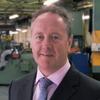

Page 14. AMRC Apprenticeship
Page 16. Skillcraft Products
Page 20. Design Tips To Sheet Metal Parts Concept
Page 23. FEV and ITL Develop Innovative Battery Housing Demonstrator For E-Vehicles
Page 24. Precision Tooling Academy
Page 26. AP&T and GEDIA Takes Press Hardening To a New Level
Page 29. ISME Gold Medal Winners
PRINCIPLE OFFICERS 4 Mr Alan Shaw President Mr Barry Smith Chairman of Council Mrs Josie Stevenson Honorary Treasurer Mr Bill Pinfold t.
146 e. ismesec@gmail.com
Secretary Mr
t.
e. adriannicklin@btinternet.com Social
Steve Watson t. 01384
656 e. post@eleven10creative.co.uk Advertising & Editor Dr
t.
e. m.mohamed@impression-technologies.com Technical Editor CONTENTS
07981 499
Honorary
Adrian Nicklin
07774 260 126
Events
505
Mohamed Mohamed
07462 826 026
ISME MEMBERSHIPS
If you want to learn more about sheet metal and meet like minded people why not become an ISME member.
OUR MAIN AIMS:
• To promote the science and working of sheet metal.
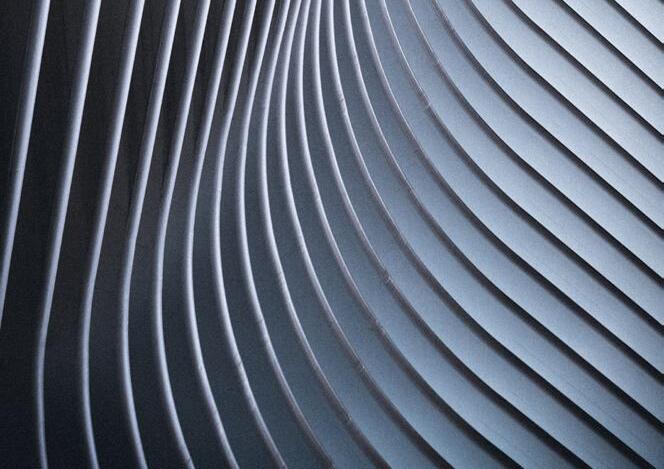
• To provide opportunities for people to exchange ideas and information.
• To encourage the development of members.
CURRENT ANNUAL MEMBERSHIP SUBSCRIPTIONS ARE:
Company Membership £300.00
Fellows Membership £85.00
Individual Membership £60.00
Corporate Individual £40.00
Student Membership £20.00
Full details and membership application forms are available on our website www.isme.org.uk
Or contact the ISME secretary at ismesec@gmail.com
AEROMAT 2023
At AeroMat 2023, Dr Mohamed Mohamed, PhD, CEng, MIMechE, FISME was delighted to deliver this presentation on ‘Hot Stamping Using HFQ® Process For Manufacture Of Aerospace Lip Skin Panels’. Mohamed met plenty of people from the aerospace industry and received a lot of praise for his presentation. If you were there, we hope you enjoyed it and found it informative too!
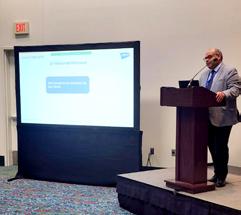
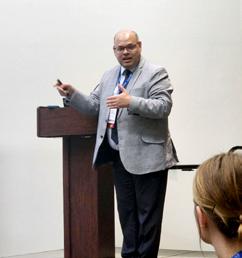
For more information on HFQ®, or to speak to Mohamed, please get in touch via our website by scanning the QR code below.

5
SECRETARY’S NOTES
ISME AT BIRMINGHAM THINKTANK MUSEUM
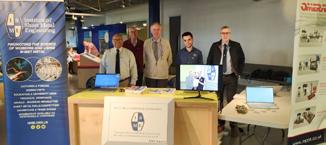
During the October half term holiday, a team of ISME Members manned a stand at the Birmingham Thinktank Museum’s “Meet the Expert Day” where, employers from various professions and businesses are invited to interact with young people to show them potential career routes. Several useful conversations with young people and their families took place during a very rewarding day. Our thanks to ISME Company members ITL and MPPS for supporting the event.
WINNER OF ISME SKILLS COMPETITION BECOMES FELLOW OF ISME.
In 2003 Rolls Royce apprentice Alan Fletcher entered the ISME Skills Competition and won with his ductwork test piece and Open Class model of an F1 car. Alan then became a Sheet Metal worker before being promoted to a Cell Team Leader. He then moved on to be a Designer, Continuous Manufacturing Engineer, Manufacturing Engineering Team Leader before being appointed Manufacturing Engineering Manager for ITP AERO UK who acquired the Rolle Royce Hucknall site in 2021. Alan brings a wealth of sheet metal experience and knowledge to the Institute and is an outstanding example of opportunities for career development from good quality apprenticeships.
NEW ISME MEMBERS
Laser Process Fabrication Ltd.
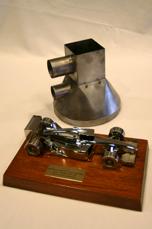


























































































Established in the 1980’s as one of the first companies in the UK to offer a Laser Cutting service, Laser Process Fabrication has grown up with Laser technology and today offers a wide array of services making them a genuine ‘one stop shop’ for sheet metal components and assemblies.
New Members of ISME:


















































Andrew Connell (M L Stainless Fabrications Ltd)
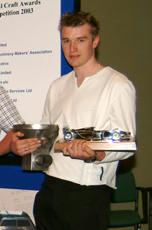
Stephen Dooley (Zurich Engineering)
Simon Grundy (Zurich Engineering).
Asset Disposal Ltd.

ADS are professional sales agents and auctioneers of all types of machinery and support equipment used in manufacturing sectors, such as the sheet metal industry, foundries, precision/general engineering companies and the metal finishing industry.
New Fellows of ISME:
Dr. Victoria Yardley (Imperial College London)
Dr Ali Abd El-Aty (Seoul National University)
Alan Fletcher (ITP AERO UK).
Bill Pinfold ISME Hon. Sec.
6
JOHN DAVIS (1938-2022) A BIOGRAPHY WRITTEN IN 2012.
Early recollection – standing on the cliffs of my home, a small fishing village on the south coast, watching the fishing boats returning from Dunkirk and wondering why we had our cases packed (too young to know about possible evacuation). Watching the aircraft dog fights in the Battle of Britain and collecting armaments from crashed aircraft. An attempt to dismantle a large shell led to a spell in hospital and on coming home found my large collections of munitions had been buried for a future generation to discover. To me the loss of the arsenal as more serious than being left with variable hearing. Watch on TV, children in war zones playing with “toys” left by adults - that is what kids do. August 1944 - woken by our mother to say aircrafts were flying over on fire - not on fire but rocket propelled Doodle Bugs. A track passed over our village so we were evacuated to Birmingham but quickly returned home.
Secondary school - not interested in throwing, kicking, or hitting round objects so relegated to umpiring cricket matches as neither side wished to choose me for their team. My escape was complete on giving on LBW decision when players observed I was watching a passing aircraft. This, together with other spare time, allowed me to use the newly equipped metalwork facilities to augment my science and maths studies to obtain both metalwork and engineering drawing A levels without attending any formal lessons. I was long gone before the headmaster discovered the scam.
Electing to choose an engineering apprenticeship instead of a career in teaching or the civil service was unbelievable since at that time in rural Sussex, the general perception was that anywhere north of Watford was populated by people working in “dark satanic mills”·
Left Rye Grammar School and immediately commenced an apprenticeship with Cincinnati Milling Machines (later Cincinnati Milacron). Among first to enroll on the new Dip Tech Sandwich course leading to an engineering degree. During the final year of my apprenticeship, I started a development
department with the position of Senior Development engineer. On completion of the apprenticeship, I was appointed Chief Draughtsman-Standard Engineering in charge of standard engineering design and all development activities.





In 1967 I transferred to parent company in Cincinnati Ohio, leading a British group of design engineers working with the designers on an international range of numerically controlled milling machines. On completion of the design phase continued coordinating the development and manufacturing of this range while working in Product Development, mainly on the analogue and digital simulations of machine tool drives and structures and adaptive control.

I returned to UK in 1969 as Manager of Engineering.
In 1974 I started my own company to work on Machine Tool and Power Press noise and vibration control.
In 1980 I separated from this company and formed Davis Decade Ltd, a company to exploit my curve monitoring patents to design, develop, manufacture and market load monitoring systems.
In 2005 I accepted a management buyout for the company. On the basis that retirement is not an option I worked on several projects including a unique traffic calming system. I served as Chairman and President of ISME and represented ISME at 5 ICOSPA Presidents Council Meetings and have been a member of the Birmingham Area Committee of IMechE.
I also had a license to pilot light aircraft, having an FAA Instruments rating for both land and sea planes and collected classic cars.
I have always been lucky to have excellent teachers and instructors, I hope that younger generations are as fortunate. As milled on the edge of our two pound coin we are “ Standing on the shoulders of giants”.
John Davis
7
TOOLMAKERS FOR THE FUTURE OF THE SHEET METAL SECTOR
The Institute for Apprenticeships & Technical Education (IFATE) have reviewed the L3 Engineering Technician Apprenticeship and action needs to be taken.

The key finding was that the L3 Engineering Technician Standard with 13 pathways needs to be restructured into individual component apprenticeships.
Organised by the Confederation of British Metalforming (CBM) the sheet metal presswork sector have formed a Trailblazer group chaired by Jaguar Land Rover working with IFATE. Members of the group Include 14 presswork Companies & 3 Contract Toolmakers.


As of today the group has completed an ‘Expression of Interest’ and are currently reviewing and updating the L3 current ‘Toolmaking & Tool and Die Maintenance standard that was established in 2017. The Standard and End Point Assessment will take a least another 4 months to complete prior forwarding for IFATE approval and agreeing a funding band.
TOOLMAKING SKILLS ARE THE BACKBONE OF THE SECTOR.

‘No tool designer no toolmakers no press tools no product’
The sector 1st & 2nd tier suppliers are spending millions of £’s buying new press tools from the far east were as 25 years ago we were 75% (estimated) self-sufficient in the UK.
Cad / Cam machining is a big part in making press tools however pure toolmaking is a skill that takes the individual machined tool components into a fully productionised piece of unique equipment into mass production to meet the product quality standard & volume. If we don’t have this skill in our workforce productivity is lost.
In that 25-year period we have lost a mass of skills through retirement with minimal succession planned training. We need to claw this back to being self-sufficient making new tooling in the UK including having quality domestic maintenance toolmakers in the press work companies.
8
JCB FACTORY VISIT & LUNCH
In March, a group of ISME Members took the amazing opportunity to venture behind the scenes of JCB’s world famous diggers; this unique tour included historical information, little-known facts, exciting insights and gets you up close to the JCB manufacturing process.


The visit began with welcome refreshments, and a short presentation in the JCB Theatre showing their corporate brand video on the global manufacturing facilities and products. We were invited by one of the Tour Guides to attend a personal tour of the ‘’Story of JCB’’ exhibition.

The tour then took us to the assembly line of the world-famous Backhoe Loader machine; here we saw the process of how the machine is built from the delivery of the sheet steel, profiling, laser cutting, welding, paint shop, assembly and finally the finished product!
To finish we had lunch in the VIP Hospitality Suite with seasonal dishes created by JCB Executive Chef, Alastair Rowe, using the organic produce sourced from JCB’s sister farm, ‘Daylesford Organic’.
NOTICE OF ANNUAL GENERAL MEETING
The 77th ANNUAL GENERAL MEETING of the Institute of Sheet Metal Engineering will be held by Zoom on Wednesday 24th May 2023 commencing at 10.00 prompt.
Members wishing to attend should notify the Hon. Sec. at ismesec@gmail.com to receive a link to the meeting and the agenda.
9
EDEN INVESTS IN NEW BRUDERER HIGH-PRECISION PRESS TO ADVANCE INNOVATION AND SUSTAINABILITY

Taking advantage of new export opportunities has seen a Middlesex manufacturer invest more than £300,000 in a new high-speed precision stamping press line.
Eden Limited, a specialist in optical air-blown fibre and cables fittings for the telecommunication industry worldwide, renewed a 35-year working relationship with Bruderer UK to place the order for the BSTA 180-36B press with the latest high speed precision servo feeder.

This latest addition is being utilised to drive innovation of new product ranges and supply the existing telecoms contracts to help ensure sustainability and development of the legacy network in the UK and Abroad.
This machine is already delivering greater accuracies with BRUDERER’s quick lift-ram technology that dynamically adjusts bottom dead centre position whilst in operation, meaning the business can guarantee process stability and part quality to their customers regardless of required volumes.
“It has given us tremendous service and reliability, so when we were looking to advance our press shops technology to make parts 10x quicker, so we are able to compete with far-east made products, there was only one investment I was going to make and the new BRUDERER press is going to be fantastic for us.”
He continued: “We have built our reputation on innovative products that have become and continue to be the go-to industry standards for over 20 years and as such are frequently copied worldwide so investments like the BRUDERER press ensure we keep ahead of our competition and paving the way forward”.
“We have seen since lockdown demand increase significantly as we are one of the very few companies worldwide that control all elements of the manufacturer in house giving us a unique position in the market to supply when others could not, so much so we have invested some £1.5m over the last 18 months which culminated in the acquisition of the high-speed precision press from Bruderer.”
The Bruderer UK technical team headed by Scott Baker worked with Eden to spec the BSTA 18036B to their exact requirements, adding a state-ofthe-art high-speed precision BSV75 Servo Feeder which included automatic
 “A pre-owned Bruderer BSTA 30 was one of the first machines I bought when I started the business back in 1993,” explained Dave Hawkins, Chairman of Eden.
“A pre-owned Bruderer BSTA 30 was one of the first machines I bought when I started the business back in 1993,” explained Dave Hawkins, Chairman of Eden.
10
material thickness adjustment among many other options to help speed up tool development, tool changeovers and ultimately the efficiency of the whole process.
Adrian Haller, Managing Director at Bruderer UK, picked up the story: “This machine will future-proof Eden’s press capability for decades and delivers the unrivalled performance and repeatable accuracy it needs when manufacturing precision components.”


“What is really pleasing about this project is that Dave and his team first purchased a Bruderer back in 1993 and that press has given them unbelievable service and will continue to do so. When the time came to add even further capability,
there was no hesitation in coming back to us – these strategic partnerships is what our company is all about.”
Pam Gill, Managing Director at Eden, concluded: “The entire project was seamless and Bruderer service and support remains second to none”

“Everything was project-managed for us from start to finish, meaning we could concentrate on meeting the increases in production and putting in place the platform we needed to maximise several new product and export opportunities.”
For further information, please visit www.edenltd.co.uk or www.bruderer.co.uk. You can also find out more on Precision high-speed presses by following @brudereruk on twitter.
FUTURE PROOFING THE BUSINESS MAKE PARTS 10 TIMES QUICKER UNRIVALLED PERFORMANCE 11

Sustainable light-weighting HFQ Technology for low carbon transportation
Sustainable light-weighting HFQ Technology for low carbon transportation
A new global standard for ultra-high strength aluminium
A new global standard for ultra-high strength aluminium

• Stronger and lighter components in sheet
• Stronger and lighter components in sheet

• Can use 2x, 6x, 7x and highly recycled alloys
• Can use 2x, 6x, 7x and highly recycled alloys
• Lower part count
• Lower part count
• Higher material utilisation
• Higher material utilisation
• No springback compensation required in tools
• No springback compensation required in tools
• No material shelf-life issues
• No material shelf-life issues
• Piece part and tooling cost reduction
• Piece part and tooling cost reduction

• High retained ductility for improved crash properties
• High retained ductility for improved crash properties
• New design possibilities, including for low cost battery trays
• New design possibilities, including for low cost battery trays
Design & Simulation Prototyping Global Component Supply Network
Design & Simulation Prototyping Global Component Supply Network
YOU CAN NOW DO A DEGREE APPRENTICESHIP AS A TOOL PROCESS ENGINEER

The University of Sheffield AMRC Training Centre has become the first provider of its kind to deliver a degree apprenticeship for the level six tool process design engineer standard, which has been developed to meet the direct needs of the members of the Confederation of British Metalforming.

The new apprenticeship, which sees a Bachelor of Engineering (BEng) in Manufacturing Technology delivered as part of the offer, has been created through a collaboration between the AMRC Training Centre and the Confederation of British Metalforming (CBM). It marks the AMRC Training Centre as the first provider of its type to have a validated degree as part of the standard. Vitally, it addresses the skills requirements for toolmakers, which are in extremely short supply.
CBM is the only specialist manufacturers’ organisation for experts in metalforming. Alongside members, CBM had identified a need within the sector to provide such an apprenticeship and approached the training centre for support.

Louise Cowling, head of degree apprenticeships at the
AMRC Training Centre, described the new apprenticeship offer as an ‘exciting move forward’, adding: “We already provide apprenticeships to a number of CBM members in South Yorkshire and we are delighted to be developing our partnership with CBM further. For them to come to us with a need for a new apprenticeship reaffirms the importance that we, as a training provider, must continue to develop our courses on offer to meet the changing needs of industry.
“At present, there is only one other provider delivering this standard of apprenticeship, but does not include a validated degree, however ours will – which makes this a first of its kind apprenticeship and enables us to provide prospective students with a new and unique offer.
“We are looking forward to getting this new apprenticeship offer off the ground in September.”
Geraldine Bolton, chief executive of the Confederation of British Metalforming, described this development ‘as a very important step forward in addressing the skills gap in the metal forming industry.
14
She added: “The AMRC Training Centre is a highly respected training provider amongst our members and we look forward to working with them and promoting this offer. As an added bonus, employers can use funds from their Apprenticeship Levy fund to pay for employees to undertake this degree.”

Thanks to the support of CBM, the confederation was part of the trailblazer group that pushed to get the apprenticeship offer approved by the Institute for Apprenticeships and Technical Education (IfATE).

The AMRC Training Centre is part of a top 100 elite Russell Group university and the AMRC, a world-leading research and innovation organisation. It also works with more than 460 employers that include titans of industry such as Siemens, Boeing, Rolls-Royce, Toyota Motorsport GMBH, McLaren Formula 1 and Airbus, alongside smaller companies which are the lifeblood of UK manufacturing.
Louise said the AMRC Training Centre is also involved in the trailblazer group, which is looking at refining the new level 3 toolmaker standard after receiving positive feedback from a number of employers expressing an interest.
The apprenticeship is planned to start at the AMRC Training Centre this September and employers can take advantage of the end-to-end recruitment service the training centre offers to help find the right apprentice for their company, or look to upskill existing members of staff.
Further information about undertaking a degree apprenticeship at the AMRC Training Centre is available via: https://amrctraining.co.uk/apprenticeships/degreeapprenticeships-level-6
15
LOUISE COWLING
SKILLCRAFT PRODUCTS LTD




Skillcraft Products Ltd is now in its fifth year. I have been here full time at our Wednesbury site for almost a year after leaving my previous company, DG Fabs ltd, who were mainly suppliers of military storage equipment. Although the company was very successful, I found we were moving in different directions. I had a passion for Sheetmetal work, continuous learning and, above all, the enjoyment of creativity and seeing people improve and fulfil their potential.
Today, Skillcraft Products is lucky to have loyal, conscientious, amazingly adaptable and pragmatic staff. We have invested heavily in both people and equipment as we believe both are essential for success. Amada is our go-to company due to their fantastic customer service and willingness to go above and beyond every time. We truly couldn’t be happier.
Recently, we added a new Amada AE CNC punch machine. As our business uses many different forms of pre-coated materials, an accurate punching machine that we can rely on is, for us, a must.
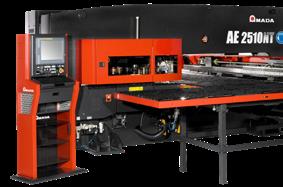
OUR PRODUCTS AND BRANDS ARE:

INFERNO WOOD-FIRED OVENS
Apart from being a jobbing Sheetmetal worker and making parts for others’ products, we have found success in developing our own specialist wood-fired ovens. It has been a long journey to crack the UK market but we’re proud to say that our manufactured ovens are no longer the minor players they were several years ago.

After years of research, prototypes and experiments, our ovens have become the durable, versatile and well-loved units we sell today, appealing to both backyard enthusiasts and mobile or trailered professionals. Our ovens are constructed from a combination of aluminium, stainless steel and aluminised and galvanised steel. This may seem extreme but the various steel properties are required to combat excess heat, rain, snow - in fact, all extremes of British weather!
You can learn more on our newly built website: www.infernowoodfiredovens.com

16
‘KARS’ KRAFT ADUSTABLE RACKING SYSTEM
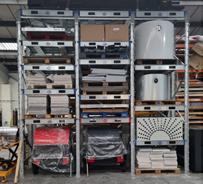

As well as our Inferno brand, we also have Acoustacraft - this is our brand of acoustic and noise control solutions such as acoustic louvres, enclosures, attenuation, screens etc. After a slow start, we now supply several UK companies.
Next, we have Kraft Storage Solutions. I have, in the recent past, both helped develop and seen the impact of adjustable storage racking. These are highly efficient, durable racking systems used by military organisations around the globe. Similar to beam racking, the bay widths are slightly wider than a standard pallet and the positions can be changed by 150mm increments. This equates to the racking using half the floor space when compared to normal beam racking, as the vertical rack positions can be altered to create almost 100% utilisation by not having any gaps.
We are quite excited by this and have received much interest from companies with high value/heavy single items such a press tools, moulds and equipment.
17
16 std pallet spaces - approx. 2 × 3m bay (6m)
32 std pallet spaces - approx. 4 × 1.5m bay (6m)
INTO THIS!
THIS
‘KARS’ KRAFT ADUSTABLE RACKING SYSTEM
TURN
TRADITIONAL BEAM RACK V’S

18
KEEP YOUR BUSINESS RUNNING WITH MPPS’ PROACTIVE MAINTENANCE STRATEGY
At MPPS we offer regular and routine servicing of presses and equipment to reduce the likelihood of failure leading to unplanned downtime.
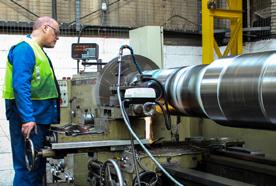
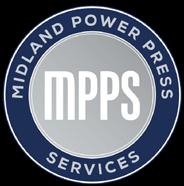
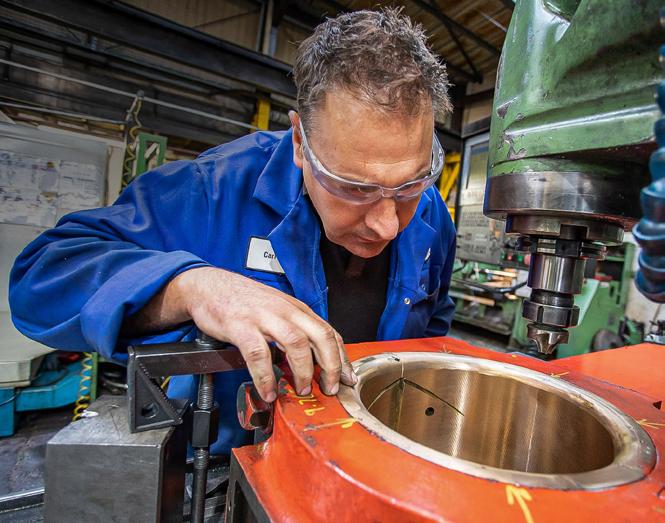
BENEFITS OF A PLANNED MAINTENANCE CONTRACT:
• Reduced unplanned downtime
• Fewer breakdowns of presses and machines that are essential for production
• Improved reliability of presses and equipment
• Fewer expensive corrective and emergency repairs

T: 0121 520 4320 W: MPPS.CO.UK E: ADMIN@MPPS.CO.UK
US
CONTACT
DESIGN TIPS TO SHEET METAL PARTS CONCEPT, AND BIW STRUCTURES MANUFACTURING.

 Paper by Daniel Perez
Paper by Daniel Perez
Hello everyone! Here we go - again - with another publication exploring some real examples and tips around BIW Structures designing and manufacturing. But before, I would to start with a general hint to everyone working in engineering or manufacturing; no matter your experience, the product you are developing, the company you are working for or the planet you are living in:
NEVER DESPISE OR CRITICIZE A DESIGN CONCEPT YOU WERE NOT FULLY INVOLVED IN DURING THE ENGINEERING AND MANUFACTURING DEVELOPMENT PHASES, EVER!
In general, I believe this is a normal “engineer mindset”: I could have designed this product more efficiently, or, if this part has been designed differently it would be way better, kind of: I have the “Eye of Thundera” and can see beyond reach - ThunderCats roar!!! That’s fine. Conflicting and questioning the existing environments is how we change and grow our business, and this is also part of the engineer mindset - we’re taught to question everything.
But, there is an important point you can never forget whilst engineering, manufacturing and mainly launching a new product - TIME. The clock never stops, and there is an enormous chain behind the launch phases that can’t be easily changed, or better saying, yes it can be changed, but will often affect the business plan negatively. So, that’s why no matter the road-blocks faced during launch phases, it has to overcome them and keep moving, always focusing on quality and obviously, on timing.
Back to the initial point, I learned it in the best way everyone can learn something new, on the field. To be honest, I believe I will never forget that weird body bracket I had to design and release ASAP during a launch phase years ago. Another thing I’m pretty sure is that everyone who seen that bracket will first think: Who made this? I confess, I felt like it was doing my job wrongly or badly done.
The point is, considering the timing, issue severity, package constraints, system interfaces, vehicle attributes, manufacturing restrictions, stamping feasibility, etc., that was the best we could do at that time, and I can tell you, the team worked very hard. Yes, the best design to solve the issue was released - the target - and believe me, there were dozens of experienced engineers working together for days until they found the best solution, on time.
The root cause was a NVH (Noise, Vibration, and Harshness) issue discovered after a driving test, and if you - ThunderCats engineer - already had the chance to work on the field solving a NVH issue, guess I don’t need to say anything else more. If you don’t, please get back to the first quote of this text.
So, how can anyone just say that design wasn’t the best without knowing all the facts during that time it was released?
No way!!
Thus, no matter the design architecture or product you’re seeing, or whatever you think it could be done better, always keep in mind that “behind the scene” there are plenty of constraints and deliverables driving the design and manufacturing definitions, which sometimes simply cannot be delivered differently, period.
Yes, things can often be changed, design optimized and manufacturing process improved, but the timing plan often decides by when and how.
In the end, the main target will always be quality, aimed to ensure customer’s integrity and overcoming their expectations, on time! Keep questioning, but never criticizing.
STAMPING MARKS, A USEFUL FEATURE TO HELP THE MANUFACTURING TEAMS PLACE THE PUZZLE PIECES IN THE RIGHT PLACE.
I believe it’s clear to everyone that using manual operations in some production steps is not so efficient due to many reasons, being quality, timing and labor costs often the main concerns, but oftentimes there is no other option than to go for manual process.
20
So, to make the process repeatable enough and these steps easier for the operators to ensure the right quality, basically two solutions are used:
- Masks, jigs, or templates. Usually added at final assembly lines, are additional jigs designed to drive the installation of some parts into the vehicle structures and ensure the correct application. For this solution, there are additional costs related to the jigs.
- Stamping marks. Basically, these are permanent marks added into sheet metal parts during the stamping process to drive the correct installation of some system interfaces, a good practical example - still in body shop - is the installation of structural adhesives. Well, adding a structural adhesive in the wrong position doesn’t help, right? Sure it doesn’t. So, defining the right positioning where the structural adhesives must be placed is how potential issues are mitigated, and this same strategy is also used to apply some labels at final assembly.
In fact, the stamping marks have many applications and useful functions during the manufacturing process in all shops, which means every time some part needs to be manually installed, clipped or glued in the body structures or some process locked directly to part’s design, it’s highly recommended to provide permanent marks.
Another good example of stamping marks supporting product functionality is the Child Lock, those little marks you can see close the door latches to advise whether the door is locked/ unlocked and avoid any child taking off the car, accidentally. Looks simple, but this feature delivered by stamping marks is so important, even most of the kids often hate this.
So, anytime you need to ensure the quality of some process or system function, bear in mind that using the stamping marks is a cheap, simple and very useful strategy.
Ah!! Don’t forget to check the stamping process!!
CLEARANCE HOLES, LOOKS SIMPLE BUT A WAY MORE COMPLEX DESIGN DELIVERABLE THAT NEEDS HIGHLY ATTENTION.
It’s quite normal having some bolted and clipping interfaces in the BIW structures, remember that besides passenger integrity the body structure is a donor system, which means designed to support all interfaces, or to simply hang all other parts and systems, similar to a human body skeleton.
But the point is, not always the fixing points can be delivered in the first surface layer, which means the parts carrying the weld nuts and clipping points might be overlaid by other part surfaces and that’s why need HIGHLY attention to consider clearance holes around the joints and avoid shadowing condition - blocking points.
Important point-out that some predefined clearances and hole sizes are considered based on material stack-up and type of joint, but it is quite important to always consider the assembly variation around the joints to define the proper clearance, including overall manufacturing process - the real world.
Holes shadowing is the last thing you want to face during manufacturing roll-out phases, and if you didn’t predict it since the initial design phases based on design variation analysis (DVA), you’re done. Well, just think about it, if you didn’t predict the clearance hole correctly in advance, it means that you may need to change the stamping tooling adding unexpected cost and affecting the timeline.
This design strategy is applied not only for bolted and clipping joints, but also for locator holes overlaid by other parts, and
this is even more critical. Well, without locator pins access, you can not load the parts into welding jigs correctly to proceed with the proper assembly marriage process - line stop.
So, here is a tip for you. Every time you’re designing some sheet metal part or BIW system, always try to look from a manufacturing point of view, and bear in mind that all the beautiful data you have made on your computer screen often is not as beautiful as you expect on the shop floor.
Care about the journey the design will get from product engineering to all manufacturing sites is also part of product engineer work.
TOY TABS – A HELPFUL AND SIMPLE DESIGN FEATURE TO SUPPORT THE MANUFACTURING PROCESS DURING BIW FRAMING STEPS.
Depending on the manufacturing flow chart, lines preset and considering the full body side framing process, it is not always possible to load the body side frames and apply the first geo-joints on the same station. So, first the body sides need to be loaded and pre-assembled into the underbody structures, then moved to the next station to start the welding operations.
The point is, this operation needs to be safely carried to ensure the sub-assemblies won’t fall down during moving to the next station and that’s why the toy tabs are used for, to simply hold the system marriage until the first spot welds are applied.
Toy-Tabs features are basically little tabs added into specific areas - that can be in upperbody or underbody structure - to hold the systems` marriage before starting the upcoming welding operations. Basically, the tabs are bent down after marriage and used as clamping to hold the system’s marriage until the next station. The bending operations are often made by robots, but sometimes also manually, depending on the station and system.
For body side framing, it’s normally added about 4 to 6 tabs each side in some specific areas like hinge pillar, A pillar, rocker, rear quarter and wheelhouse, but the design architecture and body process that drive the application of this feature.

Important to point out that the toy-tabs don’t hold the systems into final geometric coordinates, so before starting the upcoming welding process the systems are located properly using the master locators.
Sometimes, this strategy is also used in roof-bows, front and rear headers and roof cross members’ assembly process.
21
In other hands, anytime the loading and welding can not be made on the same station but need to safely carry the body into the next station, the tabs are added to support the next assembly steps.
SQUARE TO GRID LOCATING STRATEGY, A MUST HAVE DESIGN REQUIREMENT TO SUPPORT MANUFACTURING PROCESS.
Every single sheet metal part has its own locating strategy - this is a must have - the same for all next sub-assemblies layers. But, all sheetmetal parts and assemblies often have something in common, the master orientation.

The complete BIW assembly has a master hard point (X,Y,Z) based on vehicle coordinates, the same for all the other systems and interfaces. This is to properly manage all geometric variations and drive the upcoming process and assembly steps. In the end, all parts and systems refer to the same hard point to being manufactured, measured, assembled into a vehicle and monitored.
Based on that, the sheet metal parts locating follow this same strategy. All locator holes refer to master orientation position, which means the surfaces of locator holes are parallel and pierced in perpendicular orientation to master vehicle coordinates depending on loading direction, this is often called “square to grid strategy”, and it’s also part of GD&T work stream.
I confess you, sometimes this strategy it’s a big constraint for the design architecture and stamping process, once demands additional features into parts such as pockets and embossments to deliver the master orientation, besides affecting part balance in die set tools, but it’s quite helpful for manufacturing process control.
Remember all those process variations during assembly steps? Well, can you imagine having dozens of references and orientations to handle and drive the tuning into welding fixtures, die sets and design? That’s the point.
Using square to grid strategy the variations of inputs are reduced, besides simplifying the parts loading into welding fixtures during assembly steps by defining a common path, the traveling always ends square in line to master vehicle coordinates.
This is a simple design strategy and I can tell you, having all parts using the same geometric orientation during all manufacturing steps is quite helpful to drive assembly line adjustment besides quality issues resolutions.
LAST, BUT NOT LEAST, I WOULD LIKE TO TIE UP THIS ARTICLE WITH A SIMPLE QUESTION:
WHY IS IT SO IMPORTANT HAVING THE MANUFACTURING TEAMS ONBOARDING SINCE THE INITIAL PRODUCT DEVELOPMENT PHASES?

Well, the PRODUCT engineering work ends up only at the shop floor with products “in hands”, right? Right! So, how can somenone design the body architecture, select the raw material and gauges, define the joints, system interfaces and, mainly, ensure the vehicle attributes achievements without considering the entire manufacturing process? Whether you’re working as a product engineer or designer and still thinking your work it’s finished by releasing cool CAD data, better you change your mind.
So, here is JUST a simple example why product and manufacturing engineering teams need to ground together to ensure the PRODUCT will deliver the right quality in the end-of-line.
During the main manufacturing steps, the BIW needs to be geometrically referred and carried by some points, we often call them hard-points, and these points are used since the initial platform and framing assembly steps in body shop during welding marriage, moving to paint shop including static sealing and coating applications and then to final assembly lines (general assembly), before wheels down.
Besides process, the BIW structures needs to be stable enough during the manufacturing steps to avoid dimensional side effects, which means these points even that designed for process purpose are also part of product deliverable, including some vehicle attribute targets such as: torsional, stiffness, water tightness and corrosion protection.
The point is, no never the same points can be used in all the process, which means more than one hard-points strategy is often required across the shops during the manufacturing steps, including locator holes and rest surfaces. The main reason is because the BIW needs to be handled-over from one to another shop, also inside the same shop from one to another process, for example from skids to geo-pallets, from geo-pallets to overhead conveyor.
Interesting point out that the BIW center of gravity is an important input considered whilst defining these points. Well, the BIW needs to be safely carried - safety first!
But, the main target always must be the VoW (vehicle on wheels), which means whatever the hard points needed to support the manufacturing process, they need to be managed afterwards to deliver the right vehicle attribute targets - PRODUCT.
Thus, bear in mind that depending on your design strategy, during and/or after the manufacturing process, holes need to be plugged (water tightness), rest surfaces must be properly covered (corrosion protection) and all of these deliverables are also part of product development.
Whatever the name you call it, no matter your role around the development process, product and manufacturing engineering always need cross-functionally work together to ensure the complete vehicle will deliver the correct and expected quality, including functional targets. Period.
22
Daniel Perez
FEV AND ITL DEVELOP INNOVATIVE BATTERY HOUSING DEMONSTRATOR FOR E-VEHICLES
Aachen (Germany), May 2023 – FEV together with the production specialist for aluminum hot sheet forming, Impression Technologies (ITL) has presented a battery housing concept for electric vehicles. Utilizing HFQ® Technology, it makes optimum use of the space available for energy storage. For this purpose, the demanding structural requirements for this component are implemented in a novel way. By completely laying the structurally relevant components on the outside and at the same time an integration of the battery housing into the overall vehicle, installation space for additional battery cells is created. This leads to a longer range or a reduced installation space requirement while maintaining the same range. The concept developed as part of the joint project of FEV and ITL is to be manufactured and presented as a demonstrator in the coming months.
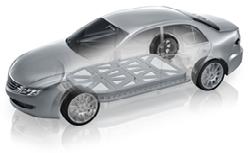
“With our latest battery housing development, we are once again showing that FEV is thinking in many directions when it comes to sustainable mobility. We offer solutions that the market demands – for example, to increase the range of e-mobility. With ITL, we have the ideal partner for lightweight construction on board for this project to make the concept tangible for our customers and partners in the form of a demonstrator in a timely manner,” said Professor Stefan Pischinger, President and CEO, FEV Group.
In the approach developed by FEV, the required structural performance is ensured by an ‘exoskeleton’ concept, which realizes a power flow above and below the battery pack. On the one hand, this keeps the loads occurring in the event of a crash away from the installation space used for the battery cells and at the same time optimizes the rigidity of the overall system (battery and bodyshell).
To achieve the required structural performance in a small installation space, the concept developed by FEV requires the implementation of complex structures with low radii and draft angles. A realization of these structures is possible with ITL’s aluminium hot forming technology HFQ® (‘Hot Form Quench’).
“The HFQ technology expands our portfolio of possible manufacturing technologies for new developments and enables us to implement more complex structures compared to cold forming technologies,” said Christian Kürten, Head of Vehicle Architecture at FEV Vehicle. “Added to this is the use of high-strength aluminum alloys, which, in conjunction with the HFQ process, ultimately deliver the required performance in optimized installation space.”
“FEV’s pioneering approach to design excellence and openmindedness in developing new lightweight concepts and solutions for electric vehicles is a great fit for ITL and the benefits of HFQ’s lightweighting technology,” said Jonathan Watkins, CEO of Impression Technologies. “With our expertise in ultra-high strength aluminum alloy characterization, designfor-manufacture, forming simulation and production, and FEV’s global network in the automotive industry, we complement each other perfectly and ensure that all automotive manufacturers can benefit from the novel battery housing concept.”
ABOUT FEV
FEV has always pushed the limits.
FEV is a globally leading engineering provider in the automotive industry and internationally recognized leader of innovation across different sectors and industries. Professor Franz Pischinger laid the foundations by combining his background in academia and engineering with a great vision for continual progress. The company has supplied solutions and strategy consulting to the world’s largest automotive OEMs and has supported customers through the entire transportation and mobility ecosystem.

As the world continues to evolve, so does FEV.
That’s why FEV is unleashing its technological and strategic expertise into other areas. It applies its forward thinking to the energy sector. And its software and system know-how will enable the company to lead the way making intelligent solutions available to everyone. FEV brings together the brightest minds from different backgrounds and specialties to find new solutions for both current and future challenges. But FEV won’t stop there.
Looking ahead, FEV continues to push the limits of innovation. With its highly qualified >7300 employees at more than 40 locations globally, FEV imagines solutions that don’t just meet today’s needs but tomorrow’s. Ultimately, FEV keeps evolving – to a better, cleaner future built on sustainable mobility, energy and software that drives everything. For the companies’ partners, its people and the world.
#FeelEVolution
23
£1M PRECISION TOOLING ACADEMY SET TO REVERSE TOOLMAKING SKILLS CRISIS
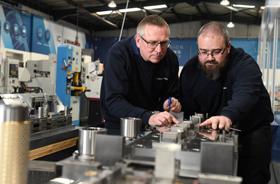
The UK’s first ever Precision Tooling Academy has been launched thanks to a pioneering partnership between In-Comm Training and Brandauer.
Over £1m has been invested by the two strategic partners to create a commercial toolroom in the training provider’s facility in Aldridge, which will produce complex tooling, as well as acting as a professional training ground for the toolmakers and designers of the future.
This is a vital move for domestic industry, with the sector being held back by a severe lack of toolmakers and the very real possibility of losing these essential skills forever as older workers choose to retire.
The Precision Tooling Academy aims to reverse this trend by offering companies access to professional toolmaking courses, upskilling opportunities for qualified engineers looking to diversify their skills and a Level 6 Tool Process Design Apprenticeship to develop the next generation of talent.


Training will be unlike anything currently on the market, with up to 35 individuals in the first twelve months able to learn on live tooling projects that will be producing hundreds of thousands of parts every week and will give Brandauer and other tooling experts the opportunity to reshore more manufacturing projects from Asia, the EU and the US. In a massive stamp of approval, a major car manufacturer has agreed to be the first company to put their engineers through the toolmaking course and has contributed to the actual development of the curriculum.
Gareth Jones, Managing Director at In-Comm Training, commented: “We have always placed employers at the heart of our approach to skills and, through our close relationship with Brandauer, identified a real demand to create and upskill engineers into world-class toolmakers.
“Lots of conversations turned into a rough plan to create an advanced training academy that is embedded into a live commercial toolroom. This would serve two purposes…provide the best possible hands-on practical and theoretical training, whilst also giving the precision stamping specialist additional capacity to meet the growing global demand for more UK made tools. A win-win and we’ve both backed it to the tune of £1m.”
He continued: “Brandauer has jointly developed the course syllabus around its own proven tooling development process, whilst we have contributed our years of expertise in vocationally balanced delivery to offer truly unique course content.
“This isn’t just a ground-breaking project for our two businesses, but for manufacturing as a whole. We immediately have provision for 35 training places, yet this could easily expand with more companies getting involved…this is open to everyone, whether you are an OEM or part of the supply chain.”
The Precision Tooling Academy has also attracted the support of Inventive Engineering & Design and Hexagon, who will bring product development, jig and fixture design and VISI die making expertise to the fore.
Unique to the toolmaking sector, the latter is an end-to-end CAD/CAM solution that is used in the design, simulation and manufacture of progressive & stamping dies and supports all parts of the process.
“This is a real industry collaboration featuring some of the best names in training, toolmaking and tool design,” added Rowan Crozier, CEO of Birmingham-based Brandauer.
“We are talking about one of the ‘great’ manufacturing disciplines and we’re in a real pinch point now where a lot of the skills could be lost forever with people retiring.
“This Academy – with more than £1m invested in a GF AgieCharmilles and Mitsubishi wire EDM machines, CNC machines, grinders and ZwickRoell material testing equipment and Hexagon scanning arm - will begin to address this issue,
24
as well as giving us additional toolroom capacity to produce commercial tools that will help us grow.
“Return on investment for companies looking to get involved is relatively quick, with an average toolmaker recruitment fee of £6k (if you can find them) and £1k savings from every press tool set right, first time.
“Exchange rates are already boosting a recent reshoring trend that has seen us win new tooling projects back from China and other low-cost countries.”
The toolmaking programme features 12 different units, ranging from manufacturing process, costing and strip layout to understanding the bill of materials, using a wire EDM machine, part validation and problem solving to ensure the tools work when they are built.
Gareth Jones concluded: “Our approach is all about bringing industry and training specialists together to ensure we deliver current and future skills.
“With this in mind, In-Comm and Brandauer are both part of the Level 3 Toolmaker and Tool & Die Maintenance Technician trailblazer group, which is rewriting the way training is delivered. This should be launched in time for the September 2023 cohorts, creating a further 30 spaces for the engineers of the future.”
For further information, please visit https://in-comm.co.uk/ tooling-academy-launch/.
ABOUT IN-COMM TRAINING
In-Comm Training, which is rated outstanding by Ofsted, is one of the UK’s leading independent training providers, supporting more than 700 apprentices and 450 companies every year with apprenticeships, upskilling opportunities, and strategic consultancy to improve business performance.
Operating from three world class technical academies in the Black Country and Shropshire, it has pioneered the employerled approach to skills, engaging with firms to understand their requirements and then collaborating with them on shaping course delivery and the latest development opportunities so you are futureproofing staff for years to come.
The strategic technical partnerships are one of its unique strengths, closely followed by a £7m investment drive that has given learners access to state-of-the-art technology in CNC machining, 3D printing, fluid power and metrology.


ABOUT BRANDAUER
Apprenticeships will also be offered in the form of a Level 6 in Tool Process Design, an advanced course that has been shaped in partnership with the Confederation of British Metalforming (CBM).
The latter will be a crucial ambassador and the End Point Assessment Centre for the qualification, which covers CAD training, blanking/form tools, simulation, SMED and lean and APQP/PPAP quality certifications.
Established in 1862, Brandauer is one of the West Midlands’ best kept manufacturing secrets, producing millions of high tolerance metal pressings and stampings every week for customers in the plumbing, automotive, domestic products, electrical, medical and renewables sectors.
Most of its products are invisible to the user but are fundamental in making many everyday items work effectively. These include electrical connectors that are fitted in 90% of the world’s kettles, edge connectors for the dimming of rear-view mirrors in 50% of modern-day cars and hundreds of millions of nose clips for face masks – so important in recent times.
25
AP&T AND GEDIA TAKES PRESS HARDENING TO A NEW LEVEL
Together with GEDIA, AP&T has created what is probably the world’s most advanced production line for manufacturing press-hardened components for the automotive industry. It is a success story that proves that goal-oriented collaboration based on mutual trust can truly go far.
AP&T’s latest press-hardening production solution lays the groundwork for providing car manufacturers with lighter, safer, more flexible designs that are cost and energy efficient. The solution includes AP&T’s unique servohydraulic press, boasting up to 70% lower energy consumption than conventional hydraulic presses, and TemperBox®, which enables soft and hard zones to be combined in one and the same finished component. The first commercial production line containing both innovations became operational at GEDIA in Germany in the fall of 2019. The same equipment was also later installed at the company’s facilities in Spain and the US. It is no coincidence that GEDIA and AP&T are pioneering the future of press hardening in the industry. It is a result of a deeply rooted collaboration between the two companies that has lasted a decade.
GEDIA, with its headquarters in Attendorn, Germany, has been manufacturing pressed sheet metal parts for the automotive industry since the mid-1950s. In 2005, the company began to take a serious interest in the opportunities the press-hardening technology offers for manufacturing structural parts that combine strength and low weight – attributes that have made it possible for car manufacturers to improve collision safety while reducing energy consumption and climate-impacting emissions. To sound out the market, they contacted AP&T, an early leader of developing production lines for press hardening.

For years, the two companies kept in touch sporadically without it resulting in any tangible business. Not until 2012 that is, when GEDIA sent out an invitation to negotiate.
ORDER FOR THREE COMPLETE LINES
“It was our impression that GEDIA was interested in potentially investing in their first press-hardening line. When the meeting was over, we had an order for three complete lines, which was naturally a positive surprise,” says AP&T’s Michael Hunger, Director and Head of Sales and Marketing Europe and Key Account Manager for GEDIA.
The three lines became operational between the years of 2014 and 2016, one in Attendorn and two in the company’s production facility in Nowa Sol, Poland.

“It was a technically challenging project that provided useful experiences and sparked the motivation to continue developing and testing new press-hardening technology together,” says Hunger.
Burkhard Vogt, GEDIA’s Group Director of Engineering, agrees.
“It was an exciting project. We resolved the challenges
together and managed to get really good results. We also developed and deepened our collaborative relationship, got closer and established new, useful contacts in different parts of the companies,” he says.
INDUSTRIALIZATION OF TEMPERBOX® FOR PARTIAL PRESS HARDENING
In 2014, GEDIA was looking for a partner to help commercialize and industrialize a new partial press-hardening innovation, TemperBox®, at that point a prototype, and once again turned to AP&T.
“I contacted AP&T’s Sales Manager, Kent Eriksson, whom I got to know while working with the press-hardening lines. I wanted to see how we could develop the TemperBox® technology together,” says Vogt.
To become a commercial product, the technology needed to be tested in industrial conditions. Following initial testing at AP&T in Ulricehamn, AP&T was given the assignment to build a try-out line with an integrated TemperBox® for small-scale testing and manufacturing in Attendorn. The results were very promising.
When GEDIA received an order for partially press-hardened parts for one of Germany’s major car manufacturers, they needed a new industry-scale line for serial manufacturing. It was the start of a highly interesting project that would push the limits of press-hardening technology.
“Thanks to the successful process and product development, we decided to design a line for mass-manufacturing using TemperBox® as an integral part of the equipment. It was a prerequisite that production would continue without extending cycle times,” says Vogt.
Stephan Gante, GEDIA’s Group Director of Maschinen- und Gebäudemanagement, was responsible for purchasing the new line and as such, was also responsible for the detailed requirement specification.
“Not only did we need to be able to produce a great number of components per hour, but we also needed to install the line in the limited space of our existing premises. The equipment also needed to be reliable and simple to maintain. It was also of great importance that the solution be energy efficient with a low electricity consumption per produced unit,” he says.
“We started planning the new line in August of 2018 and set the target to have it operational by January 1, 2020,” says Jörgen Theander, AP&T’s person responsible for the project.
TWO NEW INNOVATIONS IN THE SAME LINE
The greatest technological challenge was uniting two new innovations – AP&T’s servohydraulic press and TemperBox® – into the same line for a process that had never before been used commercially. Organizationally, it was a challenge to put together a dedicated project team with just the right expertise,
26
not to mention the right attitude toward the project. During recruitment, experience of the automotive industry was a must, as were excellent cooperation and listening skills.
“It was crucial that everyone, from the project team to R&D, really understood the expectations our customer and their customers had on the line. The goal was to manufacture on an industrial scale products with tailored, repeatable attributes with short cycle times, high availability and optimized energy consumption. That was what we were striving for,” says Theander.
To improve efficiency, GEDIA also put together a project team with the corresponding expertise under the lead of Björn Müller, who both participated in the installation of the lines in Nowa Sol and was responsible for the work on the try-out line in Attendorn.
“I already had positive experiences working with AP&T, and these were confirmed when we now embarked on a new project together. During this journey, we developed a close relationship based on trust, which meant we could solve our tasks very smoothly. Nothing was left to chance,” says Björn Müller.
Jörgen Theander highlights the importance of the close cooperation as well.
“Throughout the project, we worked closely together and spoke on a regular basis, oftentimes in person at GEDIA in Germany. Doing so made it easier to catch problems and tackle challenges efficiently. We worked together like one big, close team, all striving for the same target,” he says.
The project’s starting point was the documentation from the existing production lines and the try-out line installed in Attendorn. Questions such as what proven design solutions could be used in the new line, what needed to be improved and what would be replaced by the new technology were asked. Using this analysis, a requirement specification was
made and efforts to realize the new line could be started in earnest. In the fall of 2019, it was installed and commissioned in the Attendorn production facility.

“Since it was the first commercial press-hardening line of its kind, it was important to maintain a presence for some time to ensure that it was functioning properly, tweak the equipment and be able to rectify any problems that might arise,” says Theander.
Even before the first line was completely installed, AP&T received an order for an identical line for GEDIA’s Spanish production facility outside Barcelona.
“We were able to draw on our experiences from the first line from the very beginning of working on the second. So just 17 months later, we were able to deliver a solution optimized for the Spanish facility together with GEDIA’s German organization.”
In January of 2020, GEDIA ordered a third production line of this type. This time, it was for their Dalton, Georgia, factory in the US and was to be installed in the fall of 2021.
IT’S ALL ABOUT PEOPLE
“Together with GEDIA, we developed what is probably the world’s most advanced production line for manufacturing press-hardened components for the automotive industry. By collaborating, we not only solved technological challenges and gained valuable experiences, but we also managed to meet high expectations,” says Theander.
“Through professional, trustful and forward-looking collaboration, we jointly developed and industrialized a new technology, with a business-strategic focus. But it is all about people. They must be dedicated to the task, work well together and understand and trust one another. Not only is this how our relationship with AP&T is characterized, but it is also key to our successful efforts with TemperBox®,” says Vogt.
27
The greatest technological challenge was uniting two new innovations – AP&T’s servohydraulic press and TemperBox® – into the same line. Photograph: GEDIA.
So how does the end result compare to earlier AP&T press-hardening lines?
First and foremost, the new lines are considerably more energy efficient, much due to the fact that the servohydraulic press consumes up to 70% less energy than conventional hydraulic presses. The latest generation of multi-layer furnaces, consuming 40% less energy than its predecessors, also makes an important contribution.

In addition, the new lines make it possible to shorten manufacturing cycle times of certain products by up to 20%, freeing up time for more production.
In the design process, increased availability and a reduced
need for maintenance were in focus. Here, the multi-layer furnaces have posed a number of challenges, which the teams resolved together. Now, collaboration will continue in an attempt to significantly increase annual production hours.

“We have also developed our method of verifying the CQI-9 process repeatability of the furnaces so that it goes significantly faster than before. This makes room for more valuable production time,” says Theander.
For Stephan Gante, the original requirement specification has been practically applied three times over. What does he think of the results?
“We now have a user-friendly, space-efficient solution with a high degree of process reliability and excellent energy efficiency. Aside from TemperBox® itself, AP&T’s servohydraulic press, with its considerably lower cooling requirements and energy consumption per stroke compared to conventional hydraulic presses, plays a central role in the end result. We are very satisfied,” he says.
Björn Müller is also pleased. He says that visitors are impressed, their eyes growing wide when they catch their first glimpse of the new, highly automated lines. He also emphasizes that the developmental journey with AP&T is continuing.
“Every phase of this project has given us new experiences and insights, which we took with us to the next phase. It is a continuous improvement project that is still ongoing,” he says.
But perhaps the most important result is the experience gained from this type of collaboration. Or in the words of Jörgen Theander: “We usually talk about how we act as One Responsible Partner® in many of our customer collaborations. But in this joint effort, there have been two responsible partners who jointly created a world-class solution through their clear common goal, an open, curious approach and a deep sense of dedication.”
FACTS
GEDIA’s complete production lines for manufacturing partially press-hardened components include, e.g.:
• AP&T’s servohydraulic press.
• AP&T’s Multi-Layer Furnace with TemperBox®.
• AP&T’s automation solutions, SpeedFeeders.
gedia.com
28
Probably the world’s most advanced production line for manufacturing press-hardened components for the automotive industry. Photograph: GEDIA.
WINNERS OF THE ISME GOLD MEDAL
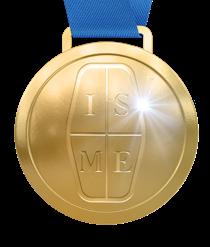
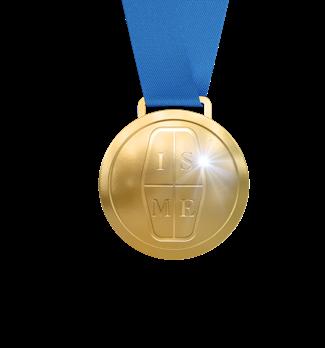
Lord Kings Norton (Harold Roxbee-Cox) Aeronautical Engineer
Dr. Jeavons
Clem Caditz, Founder member, ICOSPA
Sir Monty Finiston, Chairman, British Steel Corporation
Professor Wilson, Aston University
John Price Managing Director, Arthur Price of England (Cutlers)
Professor Messener, Eidgenossische Technical Hochschule, Zurich
1982 Sir Alec Issigonis
1983 Davy Udal, MBE
Bill Jordan, CBE General Secretary, AEEU Now Baron Jordan of Bournville
1987 Professor Bill Johnson
1988 John Hooper, Chairman, Industrial Newspapers (12th Recipient)
1989 Bernard Robinson, OBE, Managing Director, Tallent Engineering Ltd
1990 Tim Kelleher, Chief Executive, Verson International Kent Bank, PMA, USA
1992 Sir Robert Scholey, Chairman, British Steel Corporation
1994 Alan Mace, MBE, Managing Director, STADCO Ltd
Ian Ridgeway, Chairman, Joseph Rhodes Ltd (Last Silver Medal)
1996 Sir Nicholas Scheele, Jaguar Cars Ltd (First Gold Medal to Mark ISME 50)
1997 Dr. Gerhard Bruninghaus, German Presswork Association
1999 Lord Heseltine
2005 Lord Digby Jones
2008 Bentley Motors’ Craftsmen
2010 Professor Carl Chinn
2014 Graham Mosedale, Chairman, Sertec Group
2015 Rachel Eade MBE, MAS.
2016 Ian Harnett Jaguar Land Rover Head of Global Purchasing
2017 Mark White Jaguar Land Rover Body in White Designer
2018 Ray Jelf ISME/MMMA
2021 Professor Jianguo Lin, Imperial College.

29

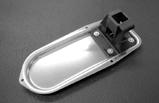
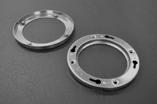
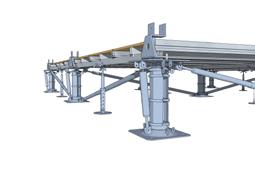


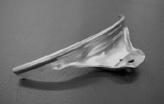
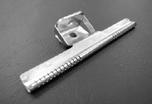
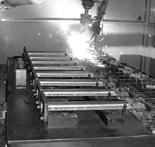
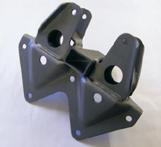

Specialists in metal forming and fabrication Commercial Catering Temporary Structures 0121 526 6060 Construction & Safety Vehicles www.regenteng.com www.floorstak.com













































































































































 “A pre-owned Bruderer BSTA 30 was one of the first machines I bought when I started the business back in 1993,” explained Dave Hawkins, Chairman of Eden.
“A pre-owned Bruderer BSTA 30 was one of the first machines I bought when I started the business back in 1993,” explained Dave Hawkins, Chairman of Eden.






















 Paper by Daniel Perez
Paper by Daniel Perez

























